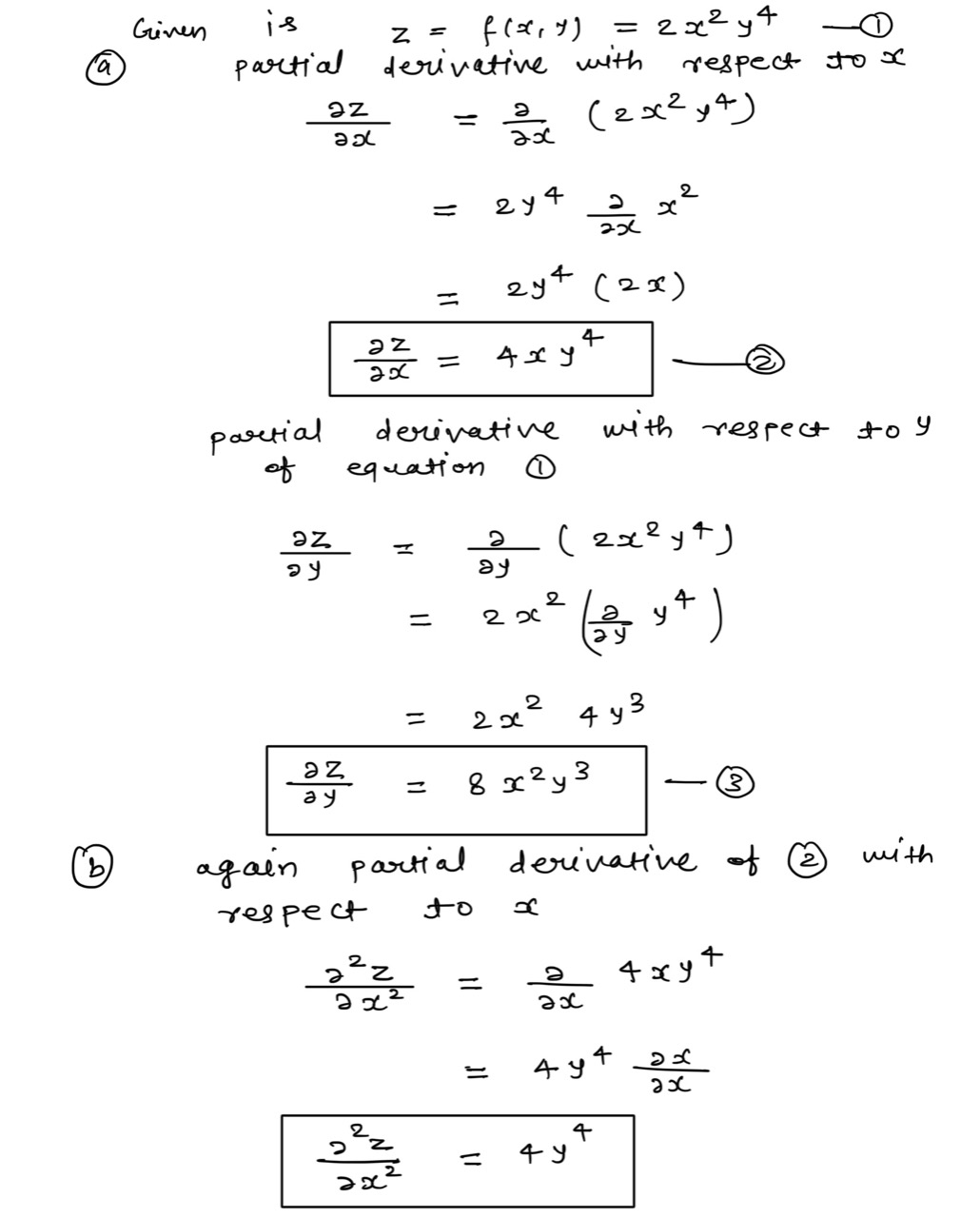Problem 1. Use calculus and some drawings to completely characterize the function z=f(x,y)=2x?y*, as we did in class with the function z=2x'y*. Here are some thoughts on how to proceed. a. Write out the first-order partial derivatives. b. Write out the second-order partial derivatives. c. Hold y constant and focus on the relationship between x and z. Draw a graph of the relationship between x and z, holding y constant.
Problem 1. Use calculus and some drawings to completely characterize the function z=f(x,y)=2x?y*, as we did in class with the function z=2x'y*. Here are some thoughts on how to proceed. a. Write out the first-order partial derivatives. b. Write out the second-order partial derivatives. c. Hold y constant and focus on the relationship between x and z. Draw a graph of the relationship between x and z, holding y constant.
Calculus: Early Transcendentals
8th Edition
ISBN:9781285741550
Author:James Stewart
Publisher:James Stewart
Chapter1: Functions And Models
Section: Chapter Questions
Problem 1RCC: (a) What is a function? What are its domain and range? (b) What is the graph of a function? (c) How...
Related questions
Question
Please see screenshot

Transcribed Image Text:Problem 1. Use calculus and some drawings to completely characterize the function
z=f(x,y)=2x?yA, as we did in class with the function z=2x'y*. Here are some thoughts on how to
proceed.
a. Write out the first-order partial derivatives.
b. Write out the second-order partial derivatives.
c. Hold y constant and focus on the relationship between x and z. Draw a graph of the
relationship between x and z, holding y constant.
d. What happens to the impact of x on z as y increases? Are x and y technical complements,
technical competitors, or technically independent?
e. Based on your calculations above, try to draw this function in three-dimensional space. (No
points will be deducted for bad drawings...)
Expert Solution
Step 1
According to our guidelines we can answer only three subparts, or first question and rest can be reposted. Not more than 3 subparts
Step by step
Solved in 3 steps with 3 images

Knowledge Booster
Learn more about
Need a deep-dive on the concept behind this application? Look no further. Learn more about this topic, calculus and related others by exploring similar questions and additional content below.Recommended textbooks for you

Calculus: Early Transcendentals
Calculus
ISBN:
9781285741550
Author:
James Stewart
Publisher:
Cengage Learning

Thomas' Calculus (14th Edition)
Calculus
ISBN:
9780134438986
Author:
Joel R. Hass, Christopher E. Heil, Maurice D. Weir
Publisher:
PEARSON

Calculus: Early Transcendentals (3rd Edition)
Calculus
ISBN:
9780134763644
Author:
William L. Briggs, Lyle Cochran, Bernard Gillett, Eric Schulz
Publisher:
PEARSON

Calculus: Early Transcendentals
Calculus
ISBN:
9781285741550
Author:
James Stewart
Publisher:
Cengage Learning

Thomas' Calculus (14th Edition)
Calculus
ISBN:
9780134438986
Author:
Joel R. Hass, Christopher E. Heil, Maurice D. Weir
Publisher:
PEARSON

Calculus: Early Transcendentals (3rd Edition)
Calculus
ISBN:
9780134763644
Author:
William L. Briggs, Lyle Cochran, Bernard Gillett, Eric Schulz
Publisher:
PEARSON

Calculus: Early Transcendentals
Calculus
ISBN:
9781319050740
Author:
Jon Rogawski, Colin Adams, Robert Franzosa
Publisher:
W. H. Freeman


Calculus: Early Transcendental Functions
Calculus
ISBN:
9781337552516
Author:
Ron Larson, Bruce H. Edwards
Publisher:
Cengage Learning